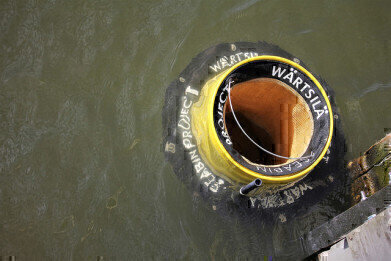Water/Wastewater
What Is the Seabin?
Apr 28 2018
The Seabin is an innovative new form of removing plastic, oils and other detritus from our seas and oceans. Essentially a floating rubbish bin, the Seabin is designed to be deployed in ports, marinas and other coastal areas to capture the waste which comes within its vicinity as it moves up and down the tidal area.
Equipped with a submersible pump capable of sucking in and spitting out 25,000 litres of water every hour, the Seabin filters out trash and other debris in its catch bag to be recycled or otherwise disposed of at a later hour. It is also capable of removing a percentage of oil floating on the surface of the water, as well.
Quitting your day job
The Seabin Project was set up in 2015 by Australian surfer and ocean-lover Pete Ceglinski, who dreamed of having completely plastic-free oceans for future generations. With that in mind, he quit his day job and created the Seabin, a receptacle capable of storing up to 20kg of debris. On a good day, Ceglinski estimates his machine should be able to capture up to 1.5kg of waste.
Compared to the two million kilos of plastic which enter our oceans every single day, that might sound like a trifling figure – but with over 5,000 orders from 330 different ports in 170 countries already, the cumulative effect could be significant. What’s more, the Seabin might not be suitable for open waters and is specifically designed to clean up coastal areas, but it could be another effective solution to cleaning up flooded lakes and reservoirs, as well.
A day in the life of a Seabin
First trialled in Asia at the Singapore Yacht Club, the Seabin showed itself to be capable of collecting a diverse array of trash and detritus. So far, a breakdown of its collection habits looks like this:
- Cigarette butts (29%)
- Plastic particles (28%)
- Food wrappers (26%)
- Foam particles (5%)
- Bottle caps (4%)
- Straws and stirrers (2%)
- Cans (1%)
- Plastic bags (1%)
It is hoped that the Seabin can make a significant impact once all of its orders are filled, with Ceglinski estimating it could remove up to 70,000 tonnes of rubbish from the ocean annually. Although the Singapore Yacht Club was its first location in Asia, it’s already operational across much of the western world, including in the UK, the USA, Canada, the Netherlands, Bermuda, Spain, France and Montenegro.
Not an end solution
Ceglinski fully admits that the Seabin cannot fully rid the ocean of plastic and other waste, but he’s adamant it’s a start. “We’re not telling you that the Seabin is going to save the ocean, when it’s not,” he explains. “It’s just going to clean up some of the mess we put in it.”
Instead, the real solution lies in educating the global populace about the importance of disposing of plastic properly and keeping our waterways free from waste. With that in mind, Seabin have developed an open source education programme, including its Global Ambassador Programme for schoolchildren, to try and raise awareness about plastic pollution prevention.
Closer to the home, the UK government recently called for evidence-based measures to reduce the national consumption of single-use plastics in a move that was welcomed by the Environmental Services Association (ESA). The body has indicated that it will direct suggestions towards the Treasury over the coming weeks and months.
Events
IWA World Water Congress & Exhibition
Aug 11 2024 Toronto, Canada
Aug 25 2024 Stockholm, Sweden and online
Sep 03 2024 Mexico City, Mexico
Sep 03 2024 Mexico City, Mexico
Sep 03 2024 San Diego, CA, USA



..jpg)









